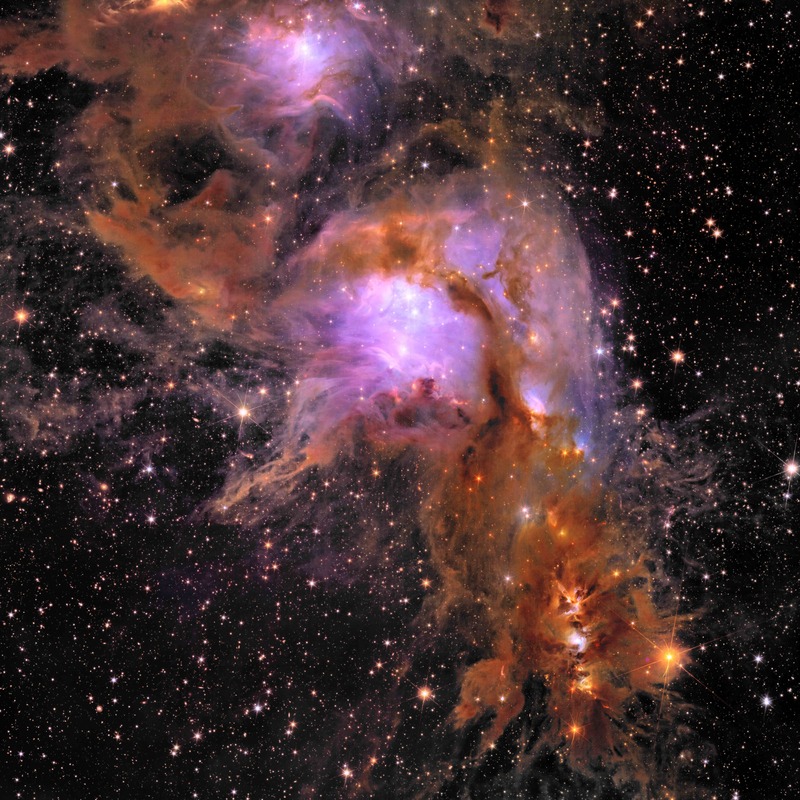More than 50,000 galaxies are visible in this image of Abell 2390, a galaxy cluster 2.7 billion light-years away from Earth. Near the center of the image, some of the galaxies appear smudged and curved, an effect called strong gravitational lensing that can be used to detect dark matter.
This image is released as part of the Early Release Observations from ESA’s Euclid space mission. All data from these initial observations are made public on 23 May 2024 – including a handful of unprecedented new views of the nearby Universe, this being one.
This new view shows the galaxy cluster Abell 2764 (top right), a very dense region of space containing hundreds of galaxies orbiting within a halo of dark matter.
Euclid captures a range of objects in this patch of sky, including many background galaxies, more distant galaxy clusters, interacting galaxies that have thrown off streams and shells of stars, and a pretty edge-on spiral that allows us to see the ‘thinness’ of its disk.
This complete view of Abell 2764 and surroundings – obtained thanks to Euclid’s impressively wide field-of-view – allows scientists to ascertain the radius of the cluster and study its outskirts with faraway galaxies still in frame. Euclid's observations of Abell 2764, as with Abell 2390 (another target depicted in the images released today from the space telescope), are also allowing scientists to witness some of the most distant galaxies that lived in a mysterious period known as the cosmic dark ages. Euclid enables us to see these galaxies back when the Universe was only 700 million years old, just 5% of its current age. Viewing their light is a specialty of Euclid, and allows us to witness how the first galaxies formed.
Also seen here is a bright foreground star that lies within our own galaxy (lower left: V*BP-Phoenicis/HD 1973, a star within our galaxy and in the southern hemisphere that’s nearly bright enough to be seen by the human eye). When we look at a star through a telescope, its light is scattered outwards into the typical spiked shape due to the telescope’s optics. Euclid was designed to make this scatter as small as possible. As a result, we can measure the star very accurately, and capture galaxies that lie nearby without being blinded by the star’s brightness.
Technical details: The data in this image were taken in about three hours of observation. This colour image was obtained by combining VIS data and NISP photometry in Y and H bands; its size is 8200 x 8200 pixels. VIS and NISP enable observing astronomical sources in four different wavelength ranges. Aesthetics choices led to the selection of three out of these four bands to be cast onto the traditional Red-Green-Blue colour channels used to represent images on our digital screens (RGB). The blue, green, red channels capture the Universe seen by Euclid around the wavelength 0.7, 1.1, and 1.7 micron respectively. This gives Euclid a distinctive colour palette: hot stars have a white-blue hue, excited hydrogen gas appears in the blue channel, and regions rich in dust and molecular gas have a clear red hue. Distant redshifted background galaxies appear very red. In the image, the stars have six prominent spikes due to how light interacts with the optical system of the telescope in the process of diffraction. Another signature of Euclid special optics is the presence of a few, very faint and small round regions of a fuzzy blue colour. These are normal artefacts of complex optical systems, so-called ‘optical ghost’; easily identifiable during data analysis, they do not cause any problem for the science goals.

